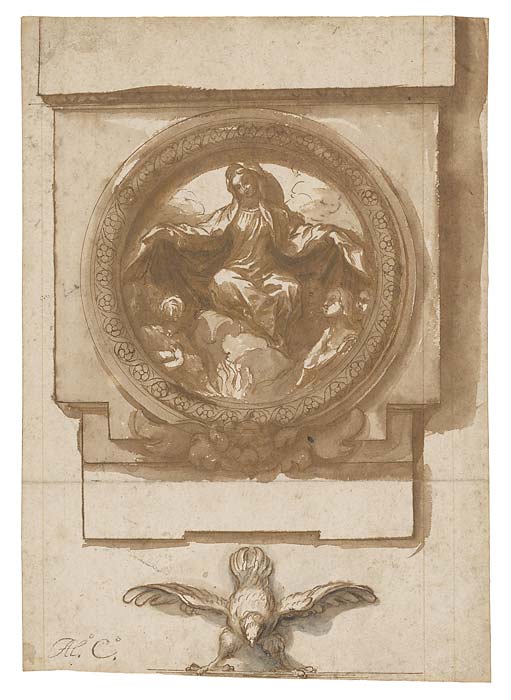
AN UNUSUAL VIRGIN
This drawing depicts the Virgin of Mercy in a trompe l'oeil architectural surround, with an eagle below. While its attribution to Cano, who was appointed architect to Granada Cathedral in 1667, has been questioned, the sheet may be connected to his design for the facade of the cathedral that served as the basis for the scheme realized after his death. The Virgin of Mercy, who shelters the faithful under her cloak, is relatively uncommon in seventeenth-century Spanish art outside of Catalonia. Nevertheless, the drawing may have been intended as a modello for one of the cathedral's sculpted reliefs.
